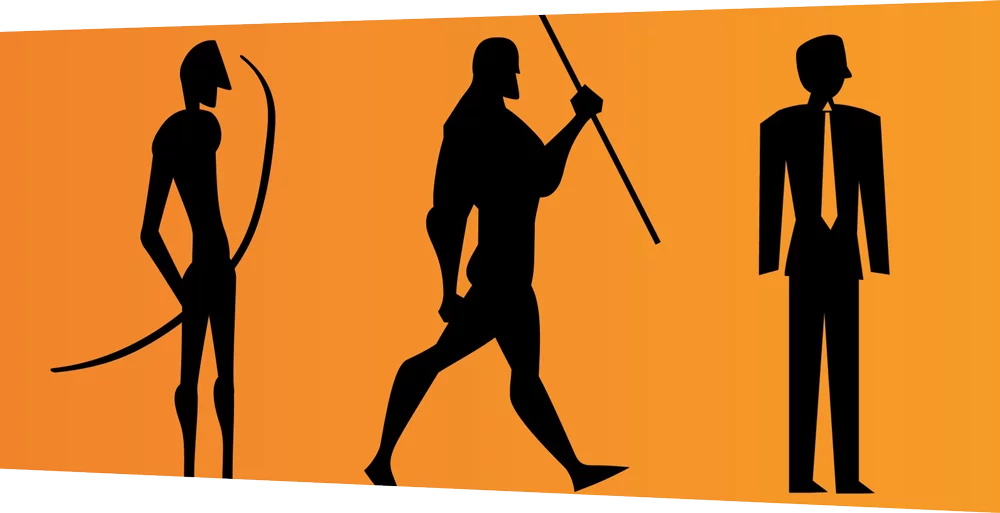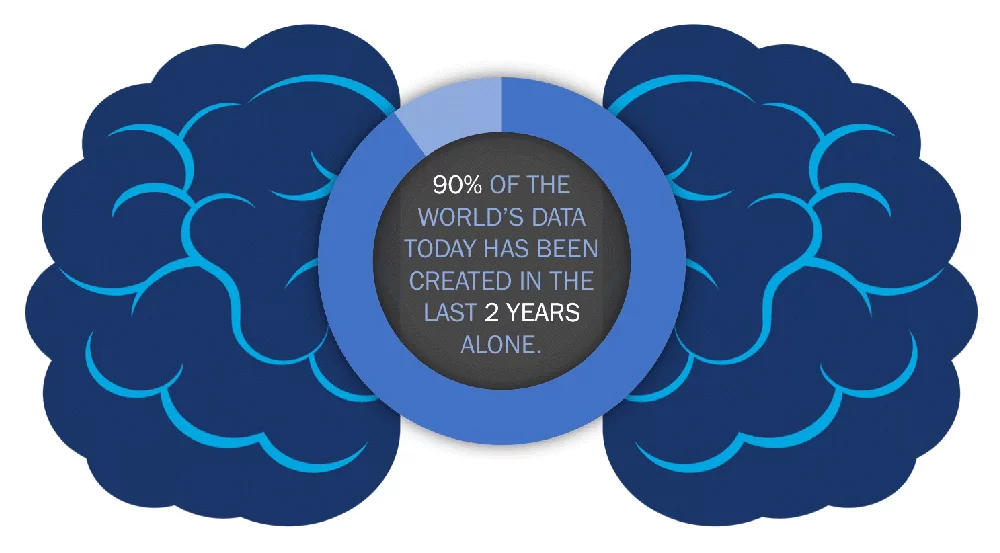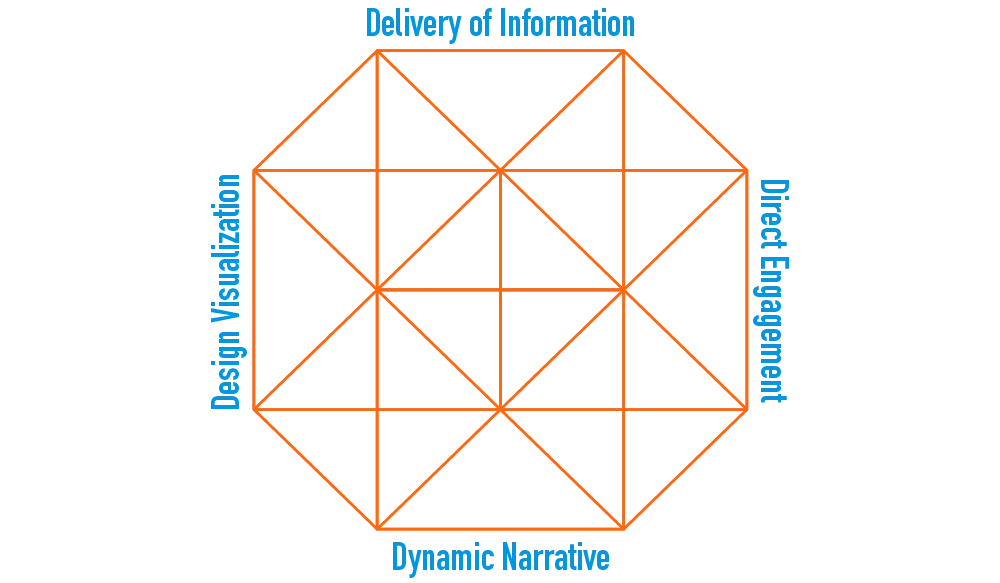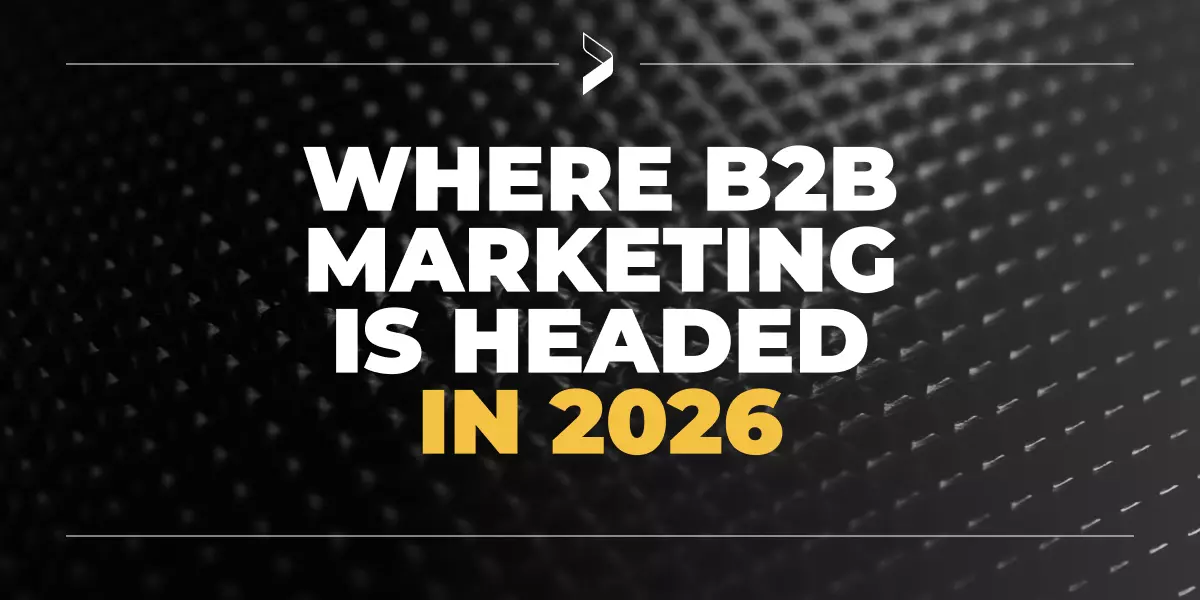4-Dimensional Storytelling for B2B Audiences

How to create compelling B2B communications that engage the imaginations of accountants, engineers, CEOs and every audience in between.
Once upon a time...
People thought B2B communications needed to be boring.
Because business, after all, is REALLY serious stuff, right? And business people are SERIOUS people. And serious business with serious people calls for serious communications. Rational arguments. Facts and figures. Charts and graphs. And so on…
Then one day, a business person woke up, went to work and decided to be a person first and a business second. It turns out that beneath all the statistics and seriousness and neckties, there was a foundation of real human emotions that was driving every single purchase decision.
And guess what: Those emotions weren’t being driven by spreadsheets or analytics reports. Hard to believe, right? The numbers were great for rationalizing business decisions AFTER the fact. But they weren’t the trigger. They weren’t the catalyst that got the deciding done… that was something deeper in the brain. Something that’s been around a long time.
This was the beginning. And in the beginning was the story.

The Origin Story of Stories
For millennia, our very survival depended on our ability to read and share the information written down in our surroundings. Human beings are hard-wired to remember stories. It’s an evolutionary advantage that, for centuries, has helped us avoid being eaten by saber-toothed tigers.
On behalf of storytellers everywhere: you’re welcome.
Over time, our stories grew and evolved with us. As languages and cultures became more intricate, the tales we told became richer, more detailed. They helped us grow from hunters and gatherers to builders and farmers. From nomadic tribes to city-dwellers.
That development is no coincidence. Because while stories are survival tactics, they are also something more. They are teaching devices. They convey information in a way that resonates with the human experience.
Our stories didn’t evolve AS A RESULT of civilization’s advances. Civilization as we know it is a RESULT of good storytelling. City planners, architects, engineers, contractors…every one of them had to act like a B2B storyteller in order to achieve the feats of modern engineering our world is built on. In order to create the room, the building, the neighborhood, the city or town you’re sitting in right now, every one of those individuals had to convey a whole lot of information in a clear, engaging and memorable way.
Stories are the perfect tool for the job. They make a memorable, lasting impression because they speak to something deep down in the emotional, decision-making centers of our brains.
As it turns out, there’s a biological explanation for this.
The “Science” of Stories
Recent neurological studies have shown that stories activate a chemical reaction in our brains. That reaction releases oxytocin. Now, oxytocin is a powerful drug. It effectively creates feelings of empathy and trust.
Statistical analysis and computational comprehension, on the other hand, are relatively new inventions in the overall scope of human history. They too are responsible for raising levels of a certain chemical in the brain: cortisol. Cortisol is the fight or flight chemical responsible for driving us to judgement and suspicion. It puts our guard up and tells us to question the input our brains are receiving.
Fast forward a few dozen millennia and we have more ways of conveying information than ever before. And more means of communicating information means more information is produced, right? With all of this information to process, it’s no wonder we tend to rely on numbers and data to get our messages across. They offer a convenient shortcut, a way to summarize all of this data.

But without a good story to provide context, that message is likely to be lost on your audience. Numbers, of course, play important roles in the storytelling process. But they just can’t carry the message alone. Without the right structure to support them, numbers lose their meaning.
Stories provide a structure for conveying all that information in a memorable and engaging way. They unite the left and right hemispheres of the brain, creating a logical path that leads your audience to a point of emotional connection and reward.
Or, biologically speaking, they answer the judgements and questions raised by those cortisol reactions in your brain with the warm fuzzy trusting feelings created by the oxytocin.
So, what does all of this have to do with B2B communications?
The 4D Storytelling Approach
Well, for far too long, there’s been this perception around B2B as a left-brain activity. Grounded in logic with little room for creative expression. B2C, on the other hand, is the fun, right-brained sibling who gets all of the attention.
It’s time to dispel this myth. B2B can (and should) be a whole-brain activity. All it takes is a little bit of strategic storytelling.
A lot goes into telling a compelling, engaging, informative story for your business. To simplify things, we’ve developed an approach that breaks the process down into four essential dimensions.
Design Visualization
The words you choose to describe your business and its products or services can become the music that sets the tone for an immersive and engaging experience. Or they can become just another echo. How do you avoid becoming part of the noise?
The difference between music and noise lies in how each individual note relates to the others. To successfully coordinate the symphony of your B2B marketing and communications, you need to make sure every single word or phrase is in sync with each other and with your brand voice. Then you need to make sure that the music is tuned to the ear of your audience.
Dynamic Narrative
Design used to simply mean communicating with visuals to educate or influence your audience. But today, design has evolved to include the entire system of communicative elements you use to craft an experience for your audience. It’s the connective tissue between every communication you offer with regard to your brand.
Clarity and consistency are vital. Allow your brand to dictate the concept for your communications. Tap into the heart of who you are and what you’re about to express your message from a real, genuine place. Avoid extraneous elements by articulating a clear concept and aligning everything to it.
When done properly, a long-time customer should feel a sense of familiarity with even your newest message. And someone who is finding your brand for the first time should feel right at home when they engage you through other channels later on.
Direct Engagement
What kind of interaction do you want to have with your audience? What is the experience you want to deliver? Is there a single path you want your audience to take or are you offering a choose-your-own-adventure?
Your audience should feel like they are entering the conversation at a critical moment in the plot of your story — right at the point where it is unfolding. As if they just so happened to arrive at the right place at the right time to witness something seemingly tailor-made for them.
That experience can take all kinds of shapes and forms. The key is to make sure that these experiences you create are connected to one another, connected to your brand and connected to the overall narrative and visual landscape.
Delivery of Information
What’s your core message? That always comes first. Never sacrifice substance for style. But beyond that core message, what are the key data points you need to impart? What information do you want your audience to walk away with? If you could burn just one fact or figure into their brains, what would it be?
Don’t forget about the data. The facts, figures and statistics are important, too. Just make sure they’re woven into the overall fabric of your story.
Crafting Your 4D Story
There is no step-by-step instruction sheet. Just like the journey you want to take your audience on, creating this type of multi-dimensional experience is not linear. It’s immersive. Each of these four dimensions informs the others. Every decision you make in the creation of your campaign or communications strategy – each detail has to answer all four questions at once:
- Does this speak in the right voice?
- Does this align with all the other elements of our design?
- Does this convey the right information at the right time?
- Does this provide our audience with a unique and engaging experience?

That’s no easy task. Weighing the answers to these questions for every single tactic, every communication, across every channel, to every audience…it might seem like overkill. Will your audience really notice if you don’t?
Maybe not.
But maybe that’s not the right question. Will your customers and prospects notice when you DO align those four dimensions?
Without a doubt.
Because, whether they know it consciously or not, they will feel like they are part of a story in which they are the hero, not the sales goal. So, before you ask yourself these four questions, you need to answer one more:
What do you want your hero to feel?
Write that down. Post it on the wall. Make it your screen saver. Your password. That’s your goal, your destination. Not a sales number on a spreadsheet.
A feeling.
It might be harder to locate and quantify. But if you find it, the results for your clients and your business will be off the charts.
Sign Up for our Newsletter - Get agency updates, industry trends and valuable resources delivered directly to you.
Godfrey Team
Godfrey helps complex B2B industries tell their stories in ways that delight their customers.




